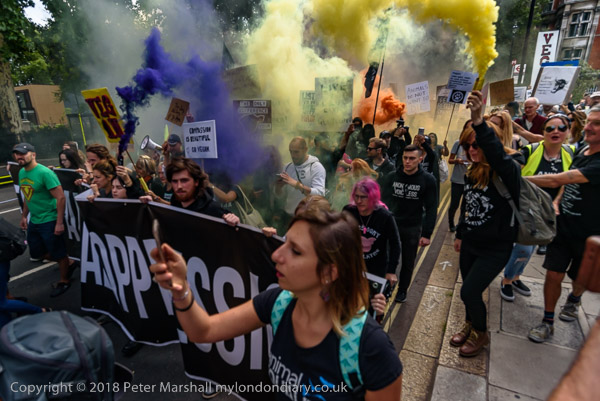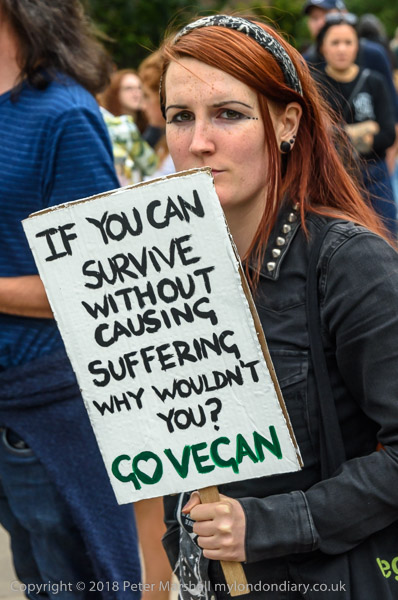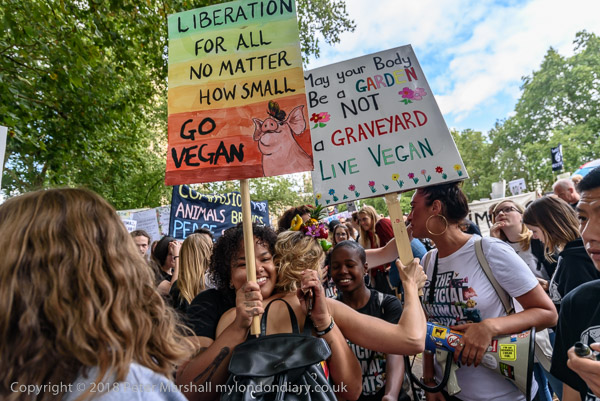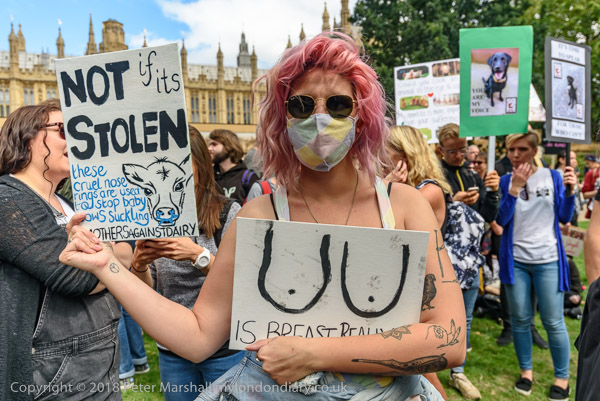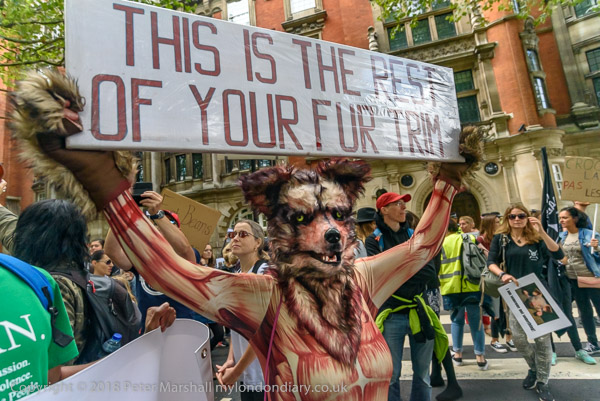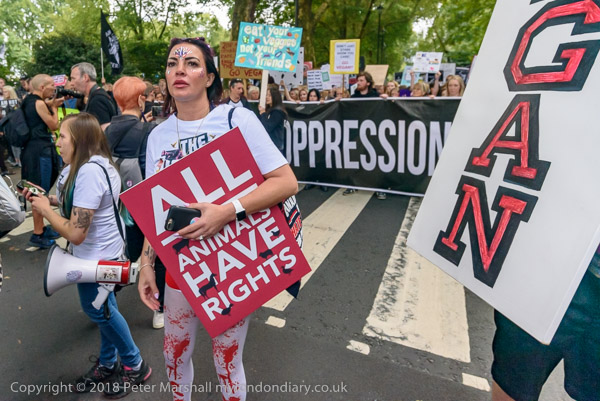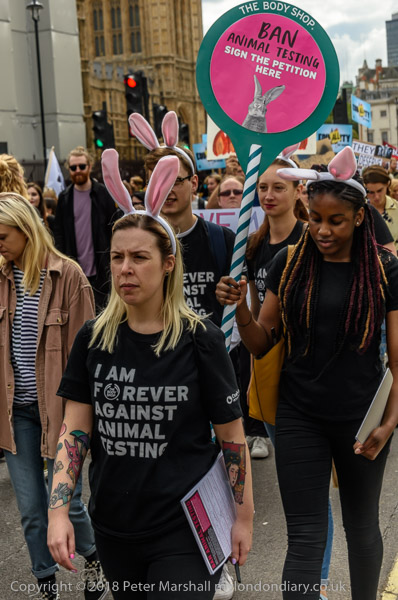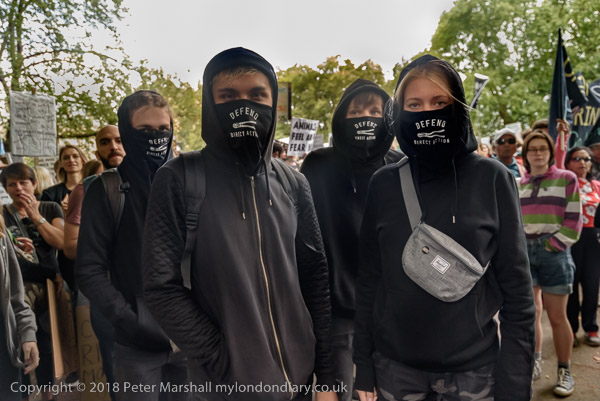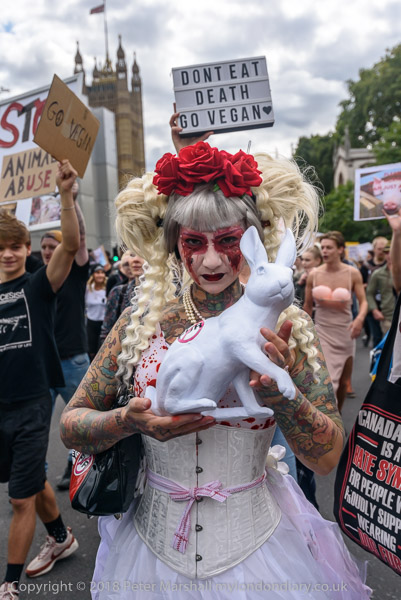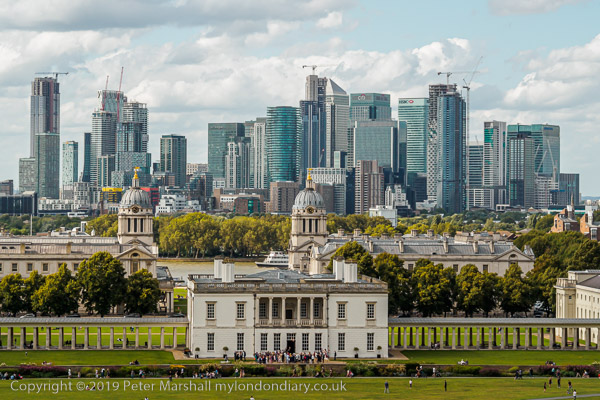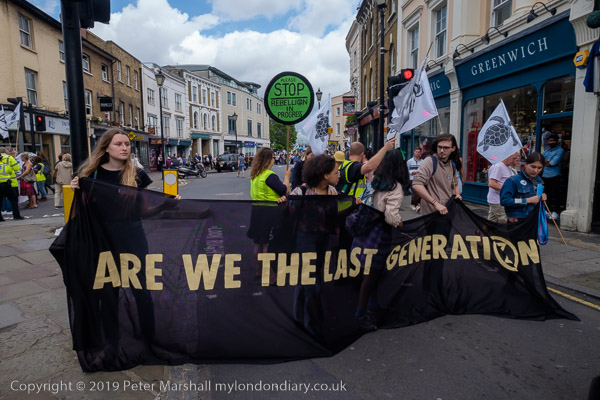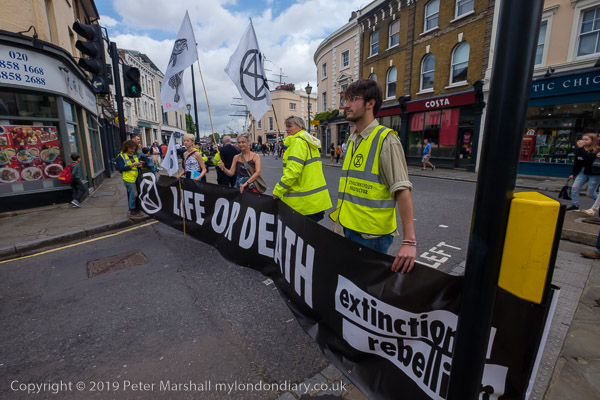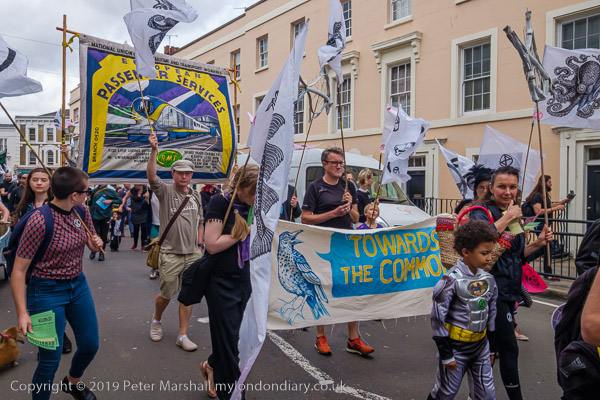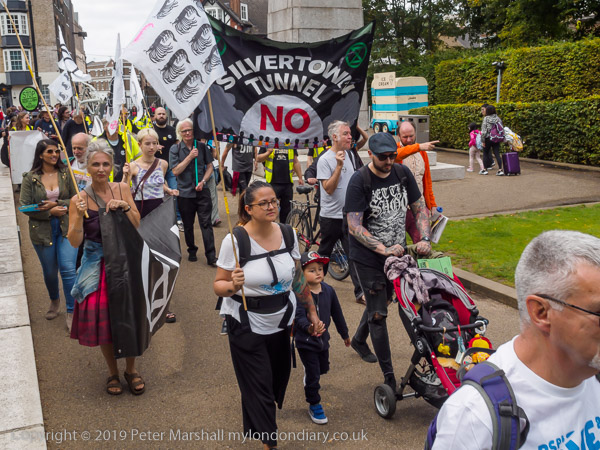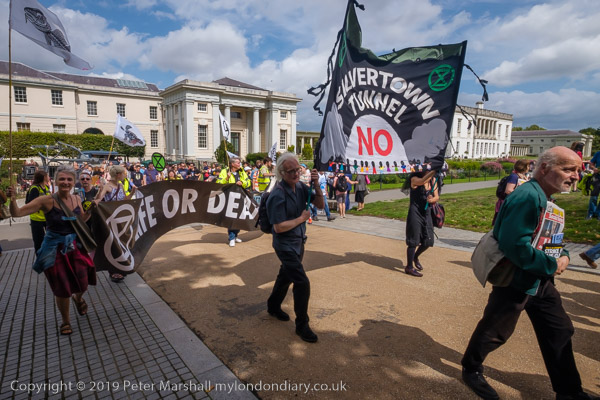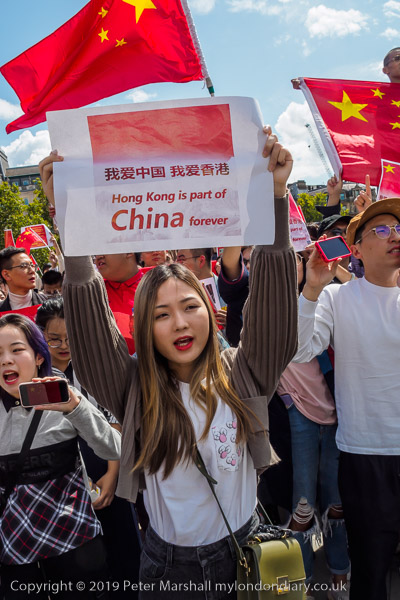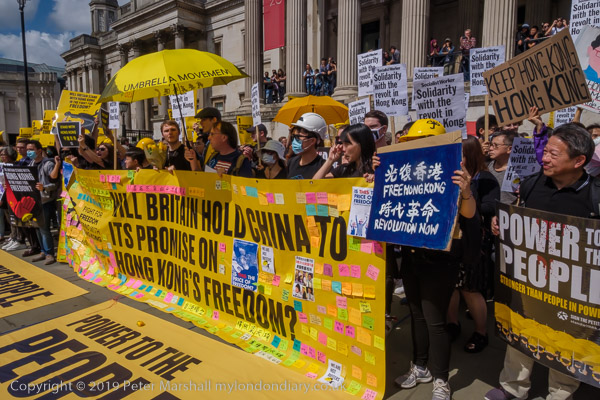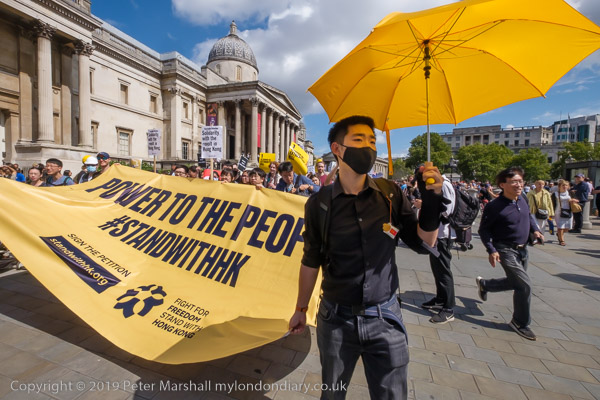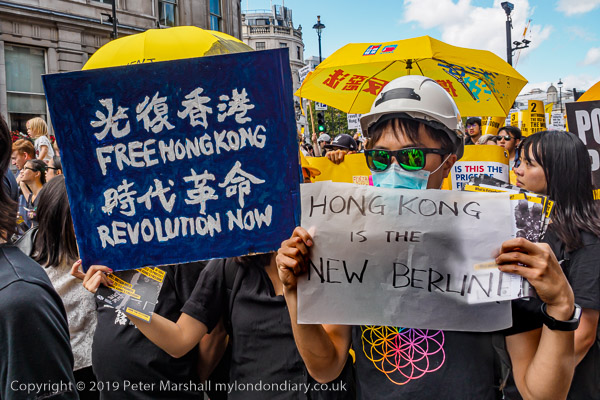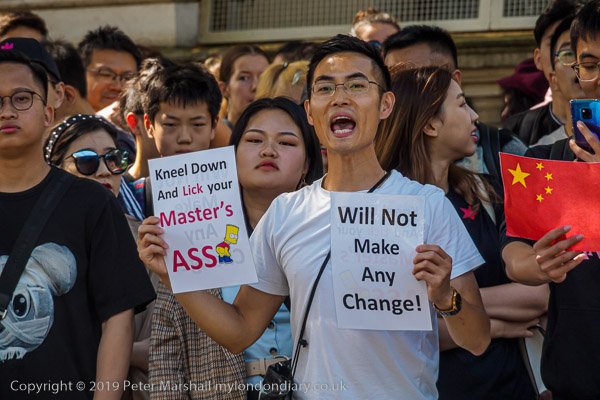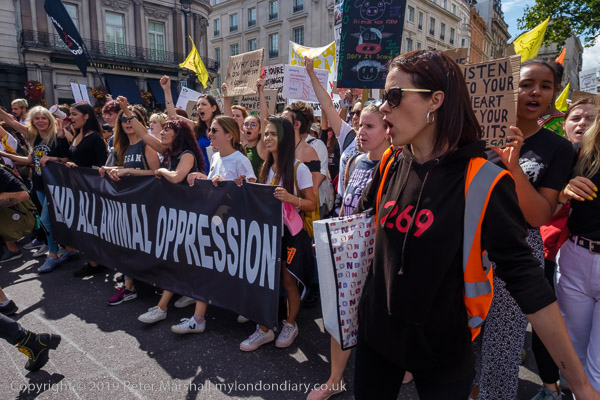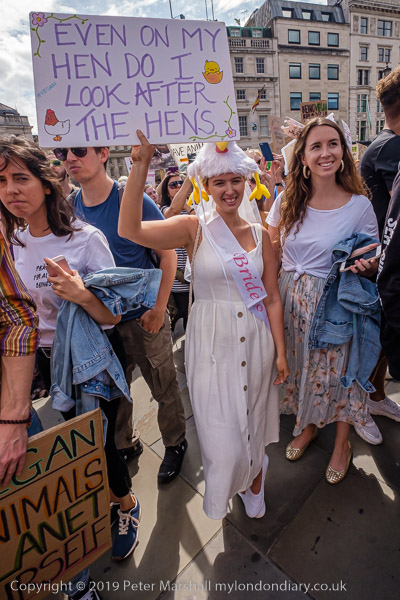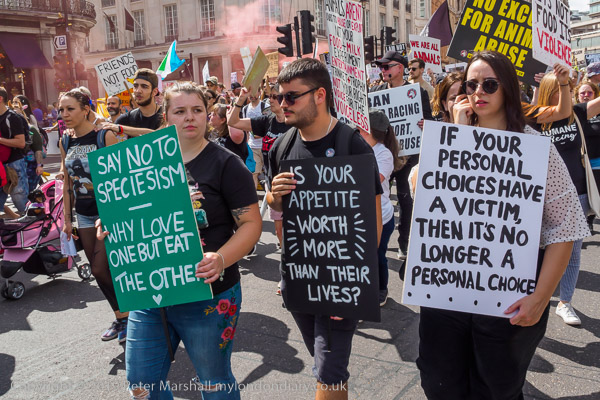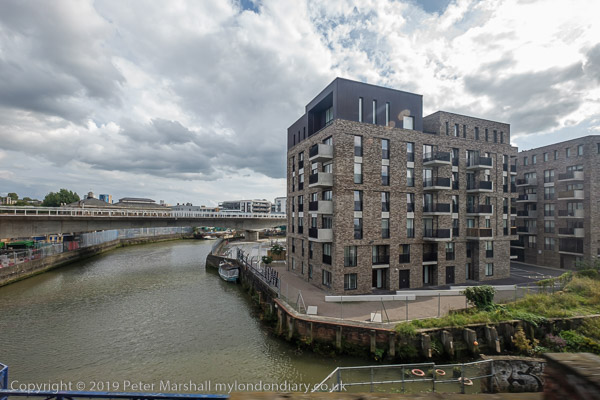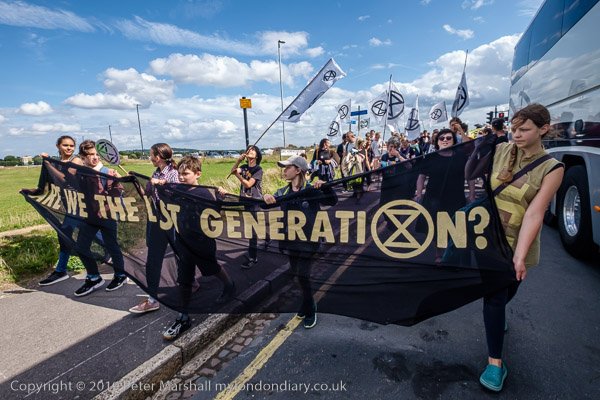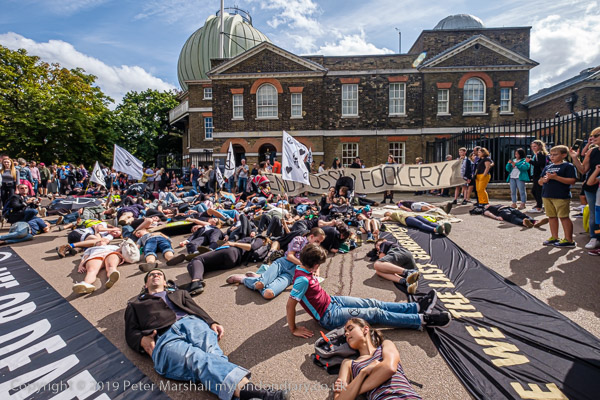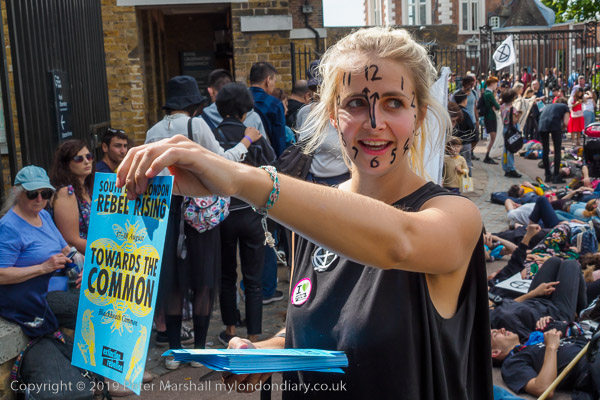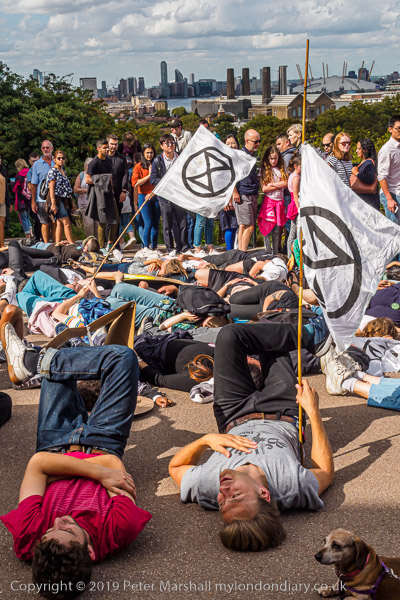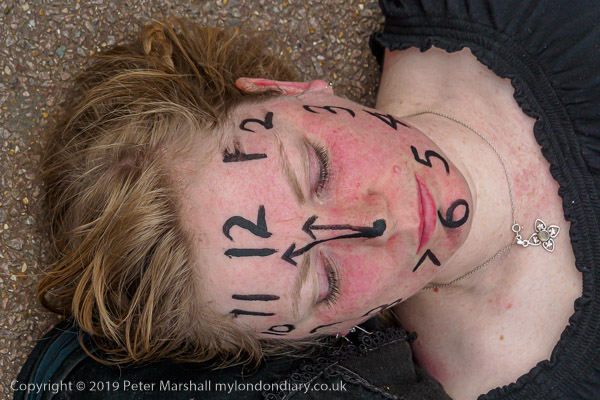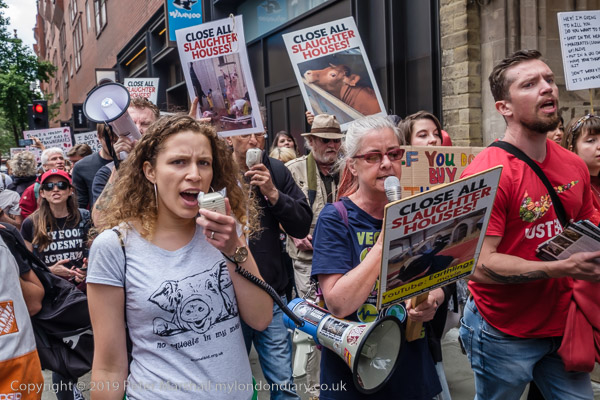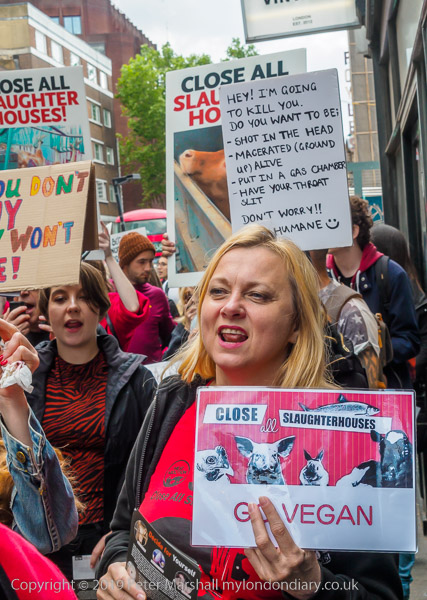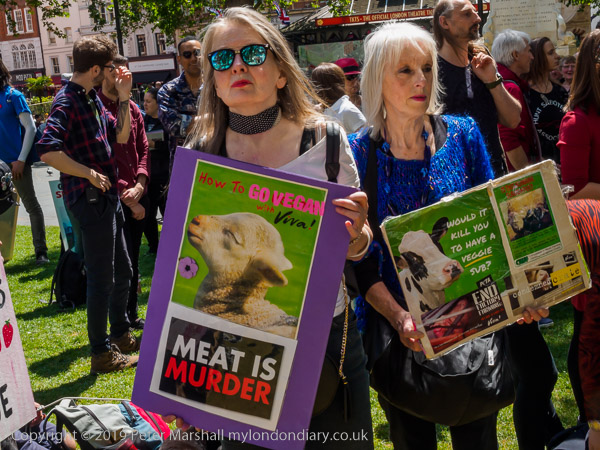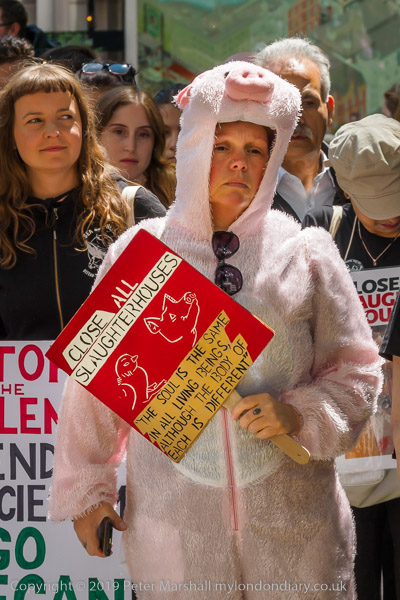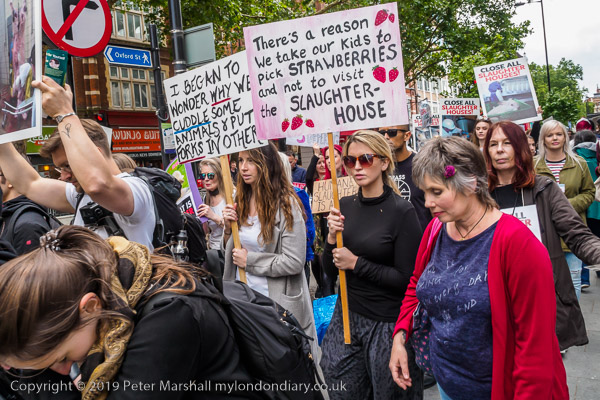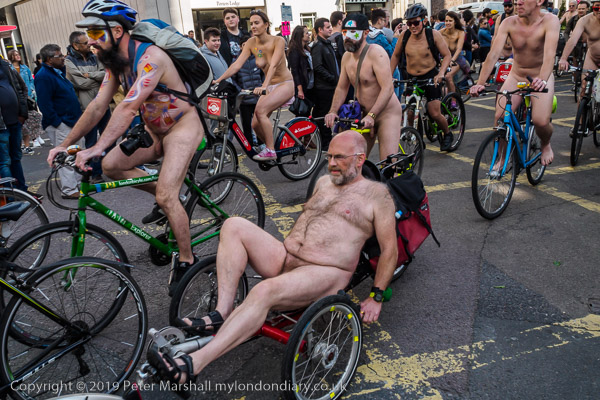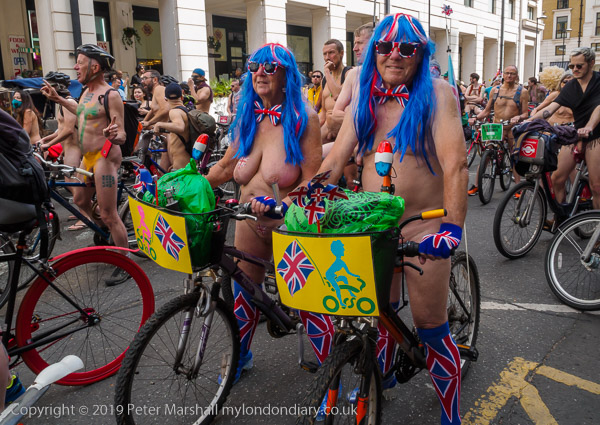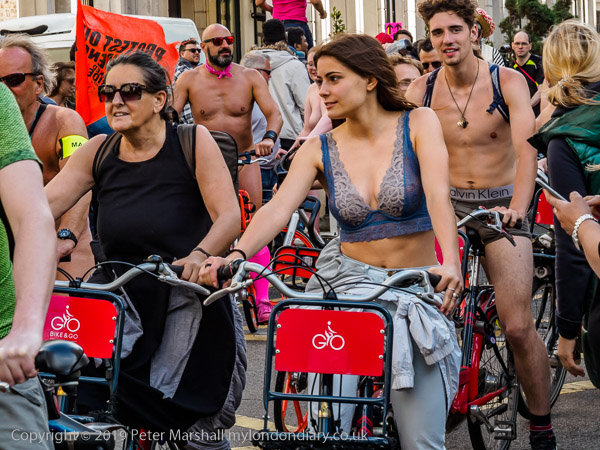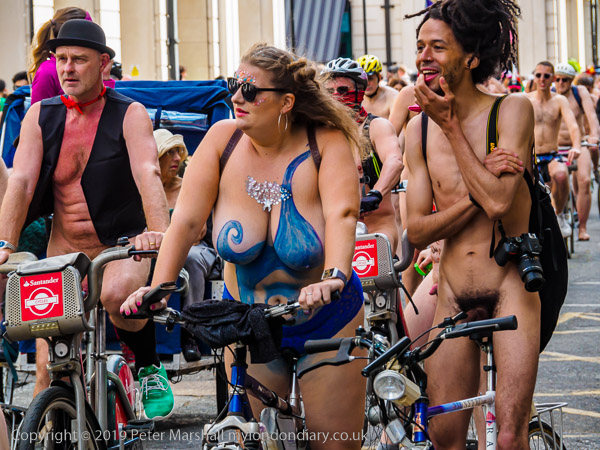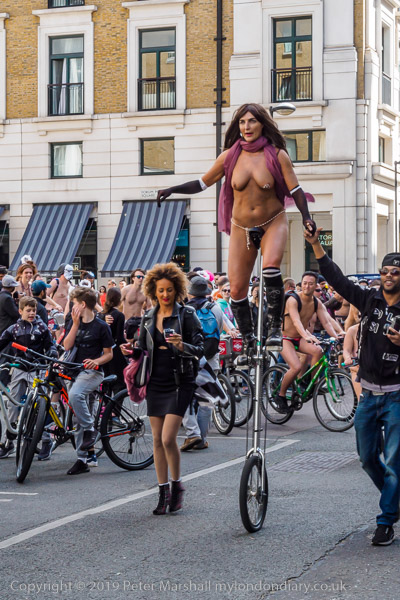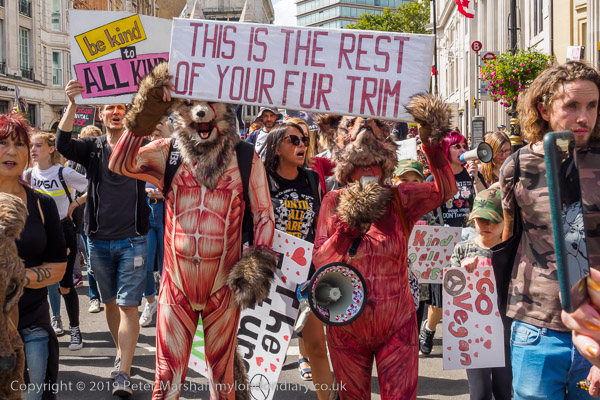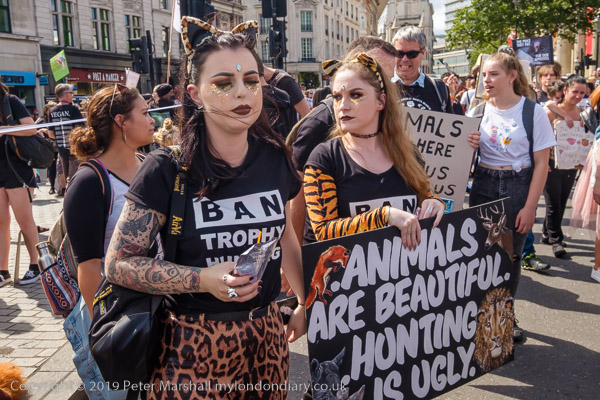Animal Rights & McStrike: After photographing the start of the 2017 Official Animal Rights March on Saturday 2nd September 2017 I took the tube to East Finchley for a rally outside the UK Headquarters of McDonald’s.
Vegans call for Animal Rights – Hyde Park
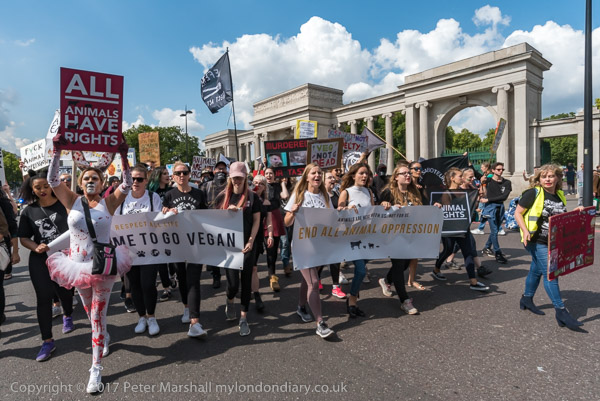
Several thousand vegans met to march from Hyde Park through London demanding an end to all animal oppression in the 2017 Official Animal Rights March, supported by The Save Movement and HeartCure Collective.
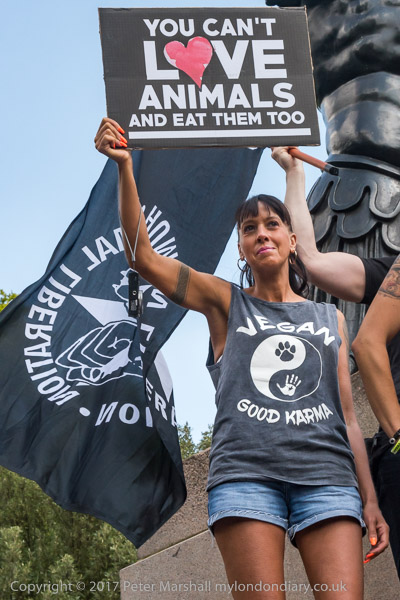
Many carried posters or placards calling for an end to regarding animals as food or sources of wool and fur, and there were some dressed as animals.

In nature there are predators and prey and a complex interdependence between species. We are in some ways at the top of this pyramid in which some animals eat other animals as well as some eating plants, and our species has evolved as omnivores. We’ve developed some rather complex and industrial ways of doing this through agriculture and food processing, but essentially we are no different from lions eating goats though we have a rather greater choice of food. Are those lions being speciesist?
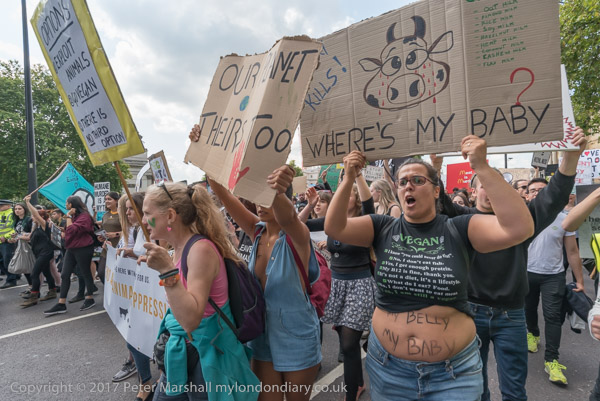
Unless we ate their meat, drank there milk, ate their eggs or fried their bacon, farm animals would not exist. There might I suppose be a few wild boars and deer roaming our countryside and certainly rather more rabbits but it would be a very different landscape and populated by very different animals to those that now adorn the vegan posters. Everyone going vegan would destroy all reason for their existence.
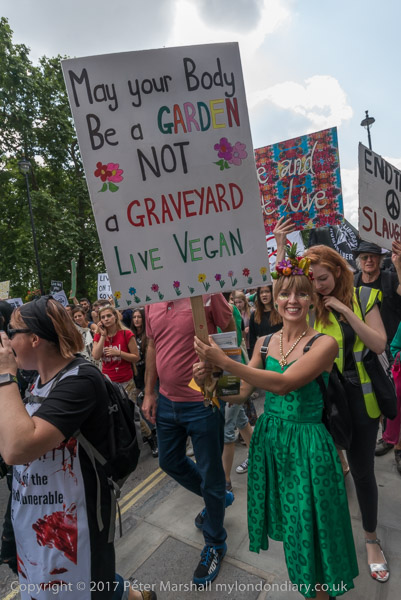
I’m certainly against cruel practices in farming and don’t condone the inhuman practices in some modern farming. I gladly pay the extra for eggs and meat that has been produced without cruelty, though it’s not always possible.
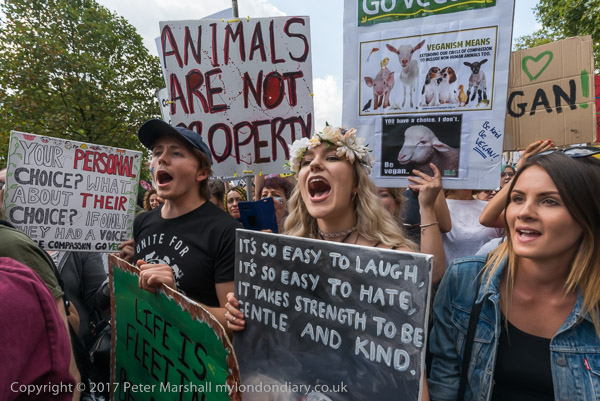
I can see no justification for fur farming, as there are good alternatives to the uses of fur and nobody needs a mink coat, and the trapping of animals for their skins seems barbaric. But while I’m against the use of animals for testing cosmetic products etc, I find it impossible to object to some use of animals in some medical research, though perhaps this could be ended as better methods are developed. There are strict rules governing it, though they could be tightened, but I wouldn’t be alive but for drugs whose development critically involved some use of animals.
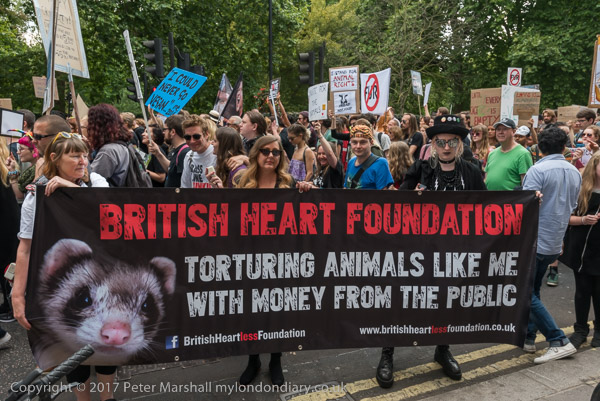
For environmental reasons it is a good thing to eat less meat and I’m happy that many of us have reduced our reliance on meat and that some have decided to cut it out of their diets, and that others have gone further and vegans. Even more doing so would be a good thing, but everyone becoming vegan would be a disaster.
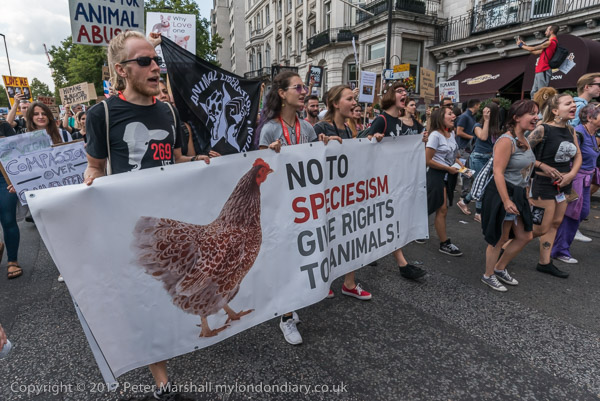
But meat is certainly not murder, though slaughter should certainly be as humane as possible – and it certainly isn’t always so. And milking cows certainly isn’t stealing their milk when they have been bred to produce many times the volume that their calves could possibly consume. Not milking them would certainly be cruelty.
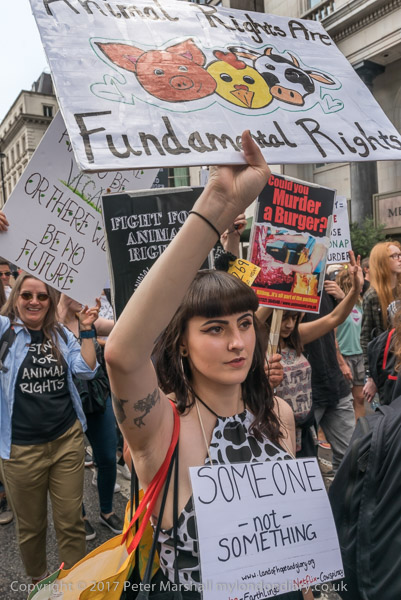
Animals are not ‘Just Like Us’, though of course we have much in common. Animals interact in rather different ways to us (and to other animal species) it infantilises and confuses to refer to them in terms we use for our human relationships and culture. Human rights are different and more important than animal rights and I often found myself wishing that we could have as many people as active in protests over these as over animal rights.
More pictures at Vegans call for Animal Rights.
McStrike rally at McDonalds HQ – East Finchley
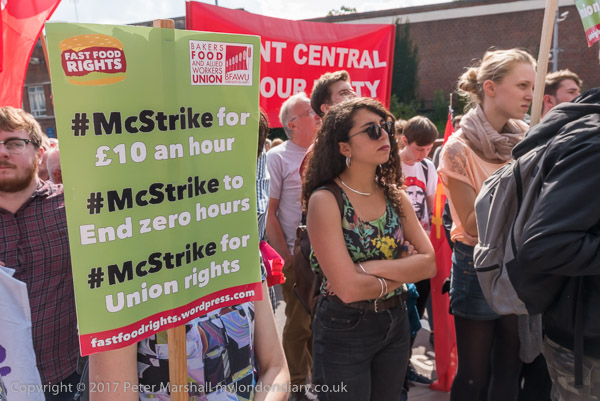
I left the animal rights marchers as they passed Green Park station and took the tube to East Finchley. The rally there was in support of McDonald’s workers who are holding the first UK strike against the company on Monday, US Labor Day, calling for an end to zero hours contracts, £10 an hour and union recognition.
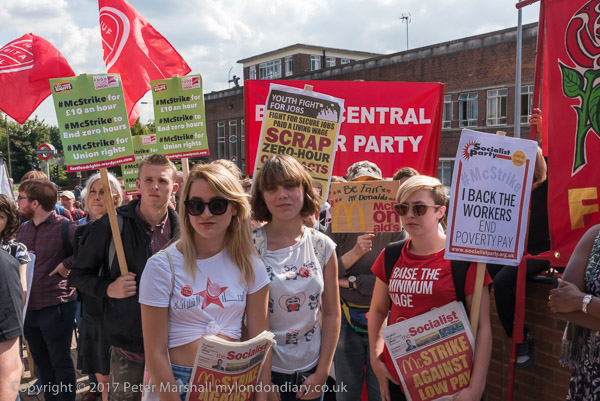
McDonald’s workers complain about bad management and bullying at work and the strikers report threats and insults by managers. There was a table with chairs in front of the McDonald’s building calling for them to come and sit down and negotiate with the BFAWU, but McDonald’s refuse to have any dealings with trade unions

Bakers, Food and Allied Workers Union (BFAWU) President Ian Hodson led the rally at which organisers from the New Zealand Unite union as well as strikers and other supporters spoke in solidarity. New Zealand Unite fought a successful campaign which ended all zero hours contracts and forced McDonald’s to recognise the union and pay higher wages and the BFAWU is determined to do the same.
More pictures at McStrike rally at McDonalds HQ.
